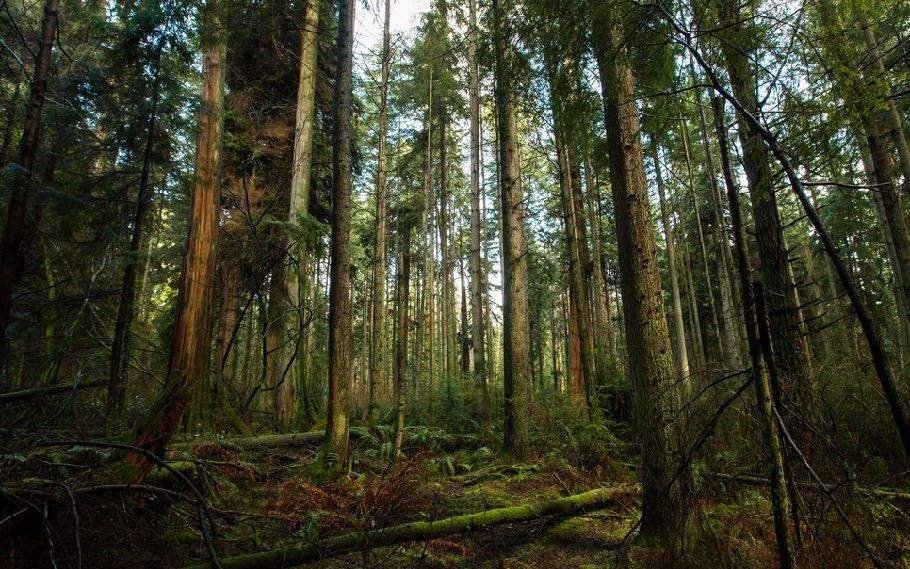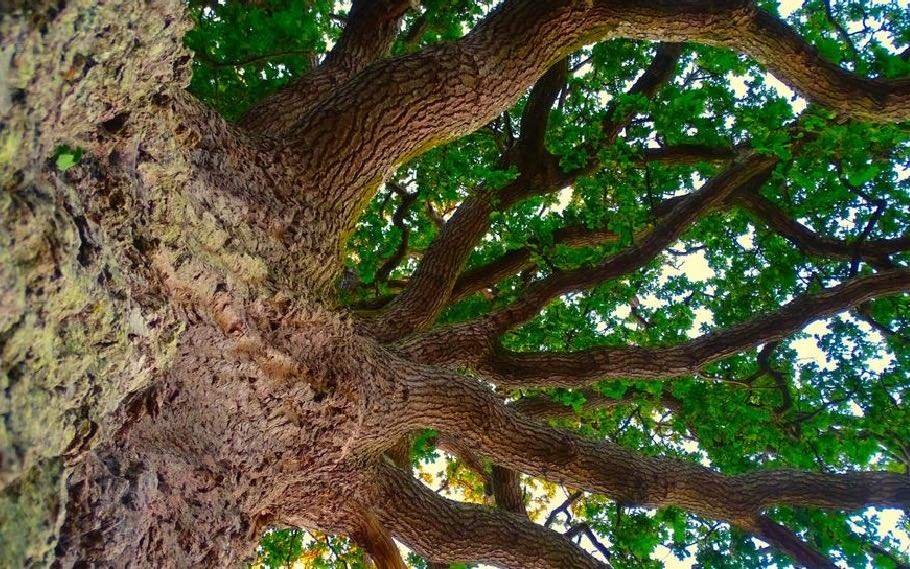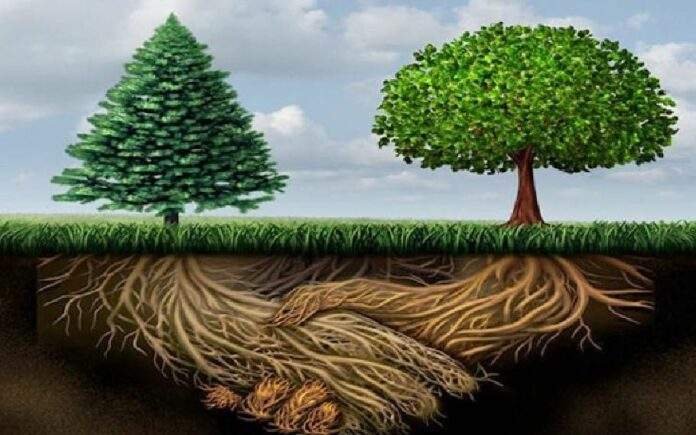We all know that trees are an essential to the ecosystem. Life on this planet would never have been possible without them. Trees play a pivotal role in our nature. But did you know that Trees can communicate with each other?
Yes! Trees can communicate.
Just like the way humans use the internet to communicate, trees use a complex underground network of fungi to communicate. The communication between them is generally drawn as an example of symbiosis.

What is Symbiosis?
Symbiosis is a long-term relationship between two organisms. Trees produce food, in the form of glucose sugars, through photosynthesis. The plants share this glucose with the fungus. Meanwhile, the fungus finds and absorbs nutrients from the soil to give back to the tree. Most of these nutrients are phosphates and nitrates. This type of symbiosis is called mutualistic symbiosis. That is because both of the species benefit from it.

Researchers hold that all plant species worldwide are in relationships with fungi living in the soil. These fungi can connect the roots of different trees (and other plants) to create what’s called a mycorrhizal network which can influence the survival, growth, health, and behaviour of the trees linked within it. Trees use their network to do such things as communicate and share resources. That’s why some scientists call it the internet of trees, or the “wood wide web.”
Trees can communicate – During mycorrhizae, the fungi siphon off food from the trees, taking some of the carbon-rich sugar that they produce during photosynthesis. The plants, in turn, obtain nutrients such as phosphorus and nitrogen that the fungi have acquired from the soil, by means of enzymes that the trees do not possess.

Working of the fungal Network:
There are fungus that have their bulk underground in abundance. The fungus in the soil grows in threads called hyphae. Together, all of these threads form a network called a mycelium. These threads can colonize (live among) the roots of trees and other plants.

Trees can communicate – How?
Fungal threads can interact with tree roots in two ways. In an ectomycorrhizal network, the fungal threads coat the root and the threads spread into the roots between cells. In an endomycorrhizal network, the fungal threads pierce the root and enter its cells.
Process of sharing resources:
Besides fungi, trees share resources with other trees. They use the fungal network to transport these nutrients. For example, tree seedlings (young plants) can’t grow as quickly in the shade of parent trees because they can’t get enough light for energy. Bigger trees can help them out by sharing nutrients via fungal threads.

Trees can communicate – Moreover, trees also share nutrients with one another. Let’s take an instance of birch which is a deciduous tree. In the spring and fall when birch are leafless, the Douglas fir is a stronger sink for carbon and nitrogen. However, in summer when birch are taller and have a full foliage, they are a stronger sink for carbon and nitrogen. Through osmosis, nutrients from the tree with the higher concentrations will transfer to the trees with the lower concentrations.
However, there are some plants who act selfish by taking in the essentials and not giving anything in return.
Sharing resources help tree defend themselves:

Trees deal with a variety of threats that include herbivores, insects and other plants eating animals. Trees living in forests can produce signals to other trees of the same species when they are under threat. They serve a warning to other trees nearby who then start to activate their defense and hereafter, they start producing chemicals to ward off a potential attack. Besides, through the signals they also attract bacteria which can help fight off an infection.












